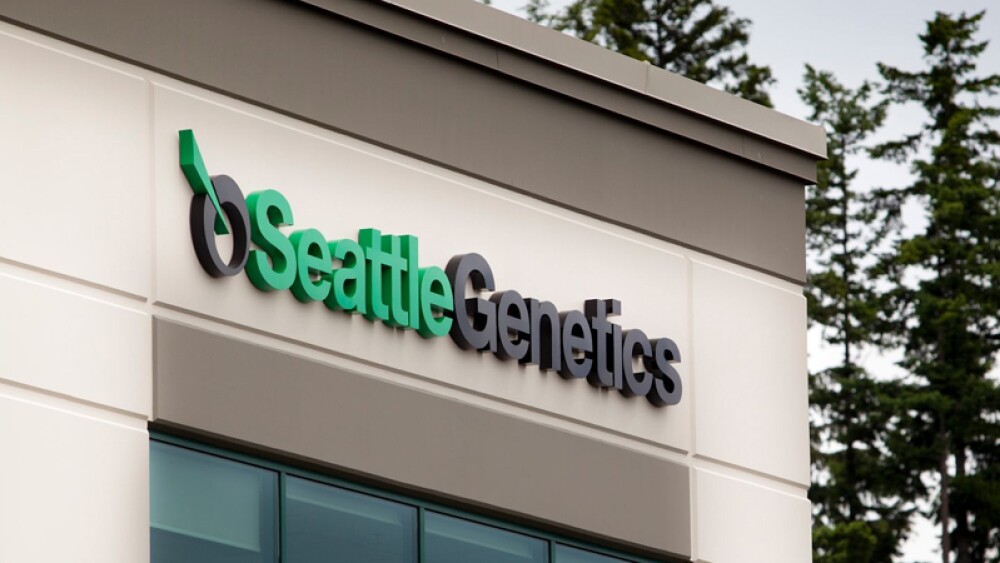August 2, 2017
By Mark Terry, BioSpace.com Breaking News Staff
Bothell, Wash. – Seattle Genetics is buying a manufacturing plant in Bothell, Washington from Bristol-Myers Squibb .
The 51,000-square-feet facility is called the Monte Villa Parkway Research Center. Seattle Genetics expects to use it for antibody production for its current and future pipeline. Approximately 75 people are currently working at that site, and Seattle Genetics indicates it hopes they will continue working at the facility.
Seattle Genetics paid Bristol-Myers $17.8 million for the land and the building, and another $25.5 million for equipment and building improvements. “We’re really excited about this,” said Clay Siegall, Seattle Genetics’ chairman, president and chief executive officer, to the Seattle Times. “It gives us the ability to control more of our supply chain.”
At this point, Seattle Genetics has only used contract manufacturers. The acquisition of the facility from Bristol-Myers is its first internal manufacturing facility. The company expects to continue to use contract manufacturers internationally.
“This turnkey manufacturing facility provides the capability, capacity and skilled workforce needed to support our expanding antibody-drug conjugate and immune-oncology pipeline, and complements our existing outsourced manufacturing model,” said Vaughn Himes, Seattle Genetics’ chief technical officer in a statement. “In addition, its location near our corporate headquarters will provide operational synergies with our current technical operations team and underscores our strategy for continued growth in Washington state.”
The company recently reported its second-quarter financials. The big focus was on the company’s single approved drug, Adcetris.
Seattle Genetics reported quarterly revenue of $108.2 million, a year-over-year increase of 13.4 percent. Income from operations, however, was still in the red, reporting a loss of $59.4 million for the quarter. Earnings per share (EPS) was also down $0.39 for the quarter.
Adcetris sales in the U.S. and Canada increased 12 percent year over year. It receives royalties from Takeda Pharmaceutical Company , which markets the drug everywhere but the U.S. and Canada. Royalties have increased 35 percent. The company has also submitted a supplemental marketing application to the U.S. Food and Drug Administration (FDA) for cutaneous T-cell lymphoma. It also plans to submit a marketing application as a first-line treatment for Hodgkin lymphoma by the end of this year.
Brian Orelli, writing for The Motley Fool, says, “On the downside, Seattle Genetics stopped a Phase III trial testing vadastuximab talirine, which has a checkered past, after more acute myeloid leukemia patients taking the trial died compared to the control group.”
Regarding a separate trial, the Adcetris phase 3 ECHELON-2 study, Siegall said in a statement, “Based on our review of pooled, blinded PFS events in the E2 trial, we have observed a lower rate of progression events compared with our progressions. We plan to interact with FDA about the potential to unblind the trial prior to reaching the prespecified number of events. Based on the length of patient follow-up, we believe the trial data will be mature in 2018 and continue to expect to report E2 data next year.”
Or, as Orelli writes, “So to translate: Patients aren’t progressing or dying as fast as expected, which is good news for patients and hopefully good news for Seattle Genetics if it’s the patients being treated with Adcetris who are the ones responding better than expected, but we don’t know for sure since the company is blinded. Since the trial is set up to end when a certain number of progression/deaths occur in both treatment arms combined, the trial is taking longer to complete than expected, so management plans to ask the FDA for permission to look at the data earlier.”





